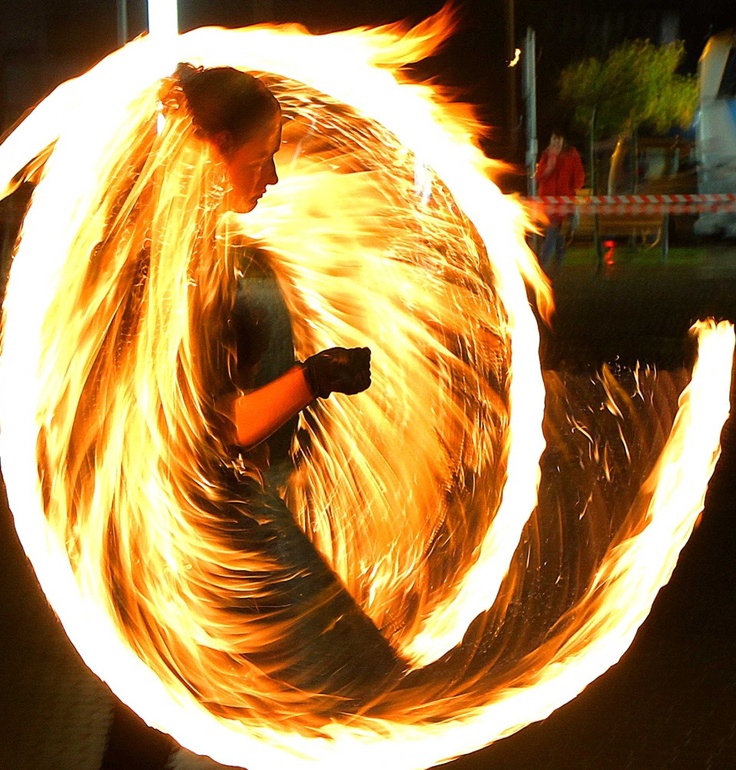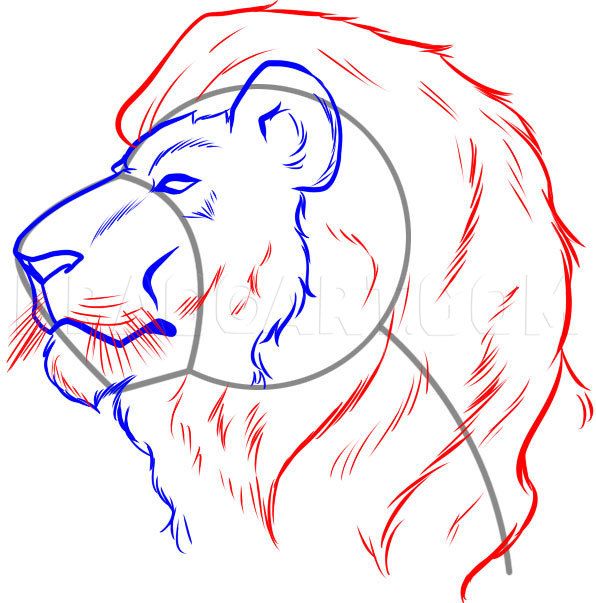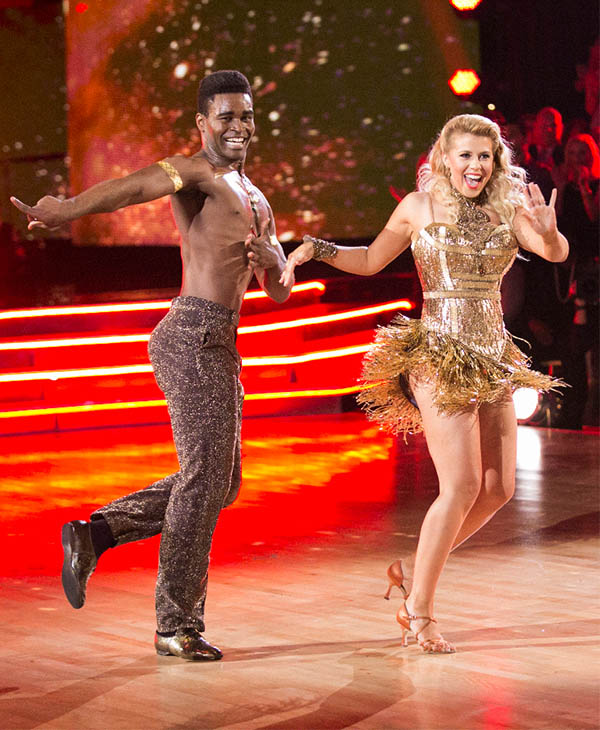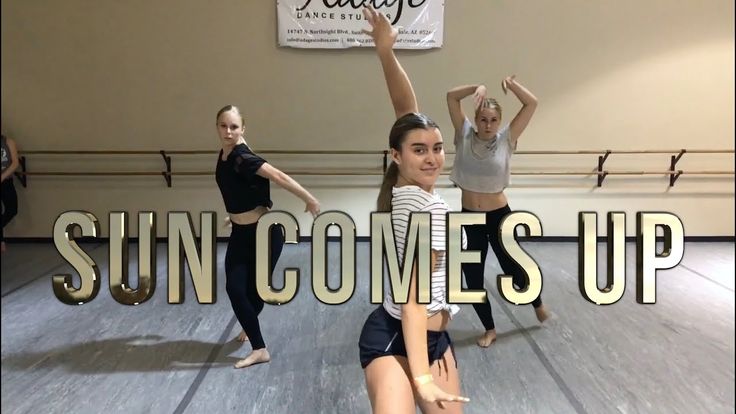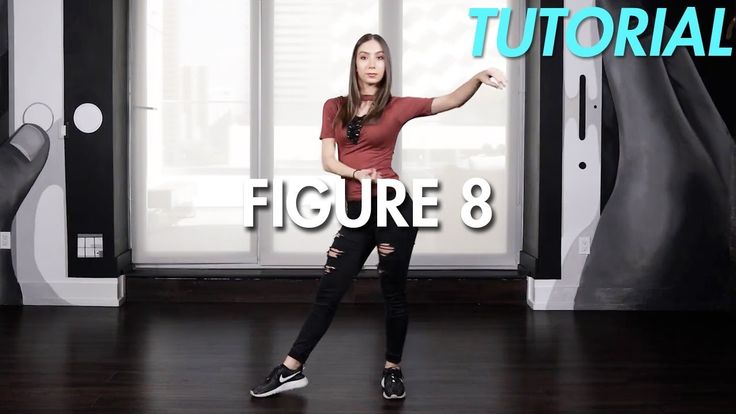How to dance pasodoble
Double The Fun with The Paso Doble Dance
The Paso Doble is considered one of the easiest Latin dances to learn. It is even thought to be less complicated than learning the Rumba. In various regions of Europe, this simple latin dance is taught in conjunction with other dances such as the Jive and Cha Cha. You may find dancers at a Los Angeles nightclub dancing the salsa, or the tango in the Dominican Republic. It is not uncommon to see dancers in Greece dance the Paso Doble socially. It is shocking to know that in a large part of the world, Beginner Latin dancers are never taught this simple dance.
No matter what part of the world you are from, whether it is Portugal, Dubai, or even Durham, North Carolina, our professional dance instructors at Fred Astaire Dance Studio will show you just how easy this Latin dance really is. Keep on reading and you’ll agree that Paso Doble is a simple and fun dance to add to your repertoire.
Origins of the Paso Doble
Before you can learn the steps, you must know the background and history of the Paso Doble.
Also known as the Pasodoble, it can be dated back centuries ago was primarily used as victory dance by bullfighters. It gained so much popularity that among the villagers that they would dance to the festive music for hours on end.
If you are portraying the role of a leader, you would start by standing on your left foot. The follower would stand on their right foot. The leader would always step off with their right foot. While the one portraying the role of the follower would always step off with their left foot.
The next step would be to take small steps with the ball of your feet. Count to yourself, one – two, one – two. That is just how simple the Paso Doble is.
Those are just the basic steps, mix in a few variations to add some colorful flare to your dance routine.
-
- Chasse to The Right
Step to the right, dance close, to the side, dance close and to the side.
-
- Chasse to The Left
Step to the left, dance to the side, dance close, to the side, and dance close.
-
- Basic Movement Back
Taking small steps to the back
-
- Basic Movement Forward
Taking small steps forward
-
- Sur Place
Dancing the basic steps of the Paso Doble while staying in place.
Walking in the Paso Doble
While taking the small one-two steps, you can use a series of walking steps. Start by standing in a closed position. The leader would be standing with their right foot, walk forward, left foot and right foot. You can end with your feet together by closing with a left foot then right.
The follower would be mirroring the leader. You can walk in two ways:
-
- The Attack
This movement is used to move from one spot of the dance floor to the next. Instead of small steps on the ball of your feet, you would use a normal length step.
-
- Promenade Close
Some dancers also choose to walk in a promenade fashion.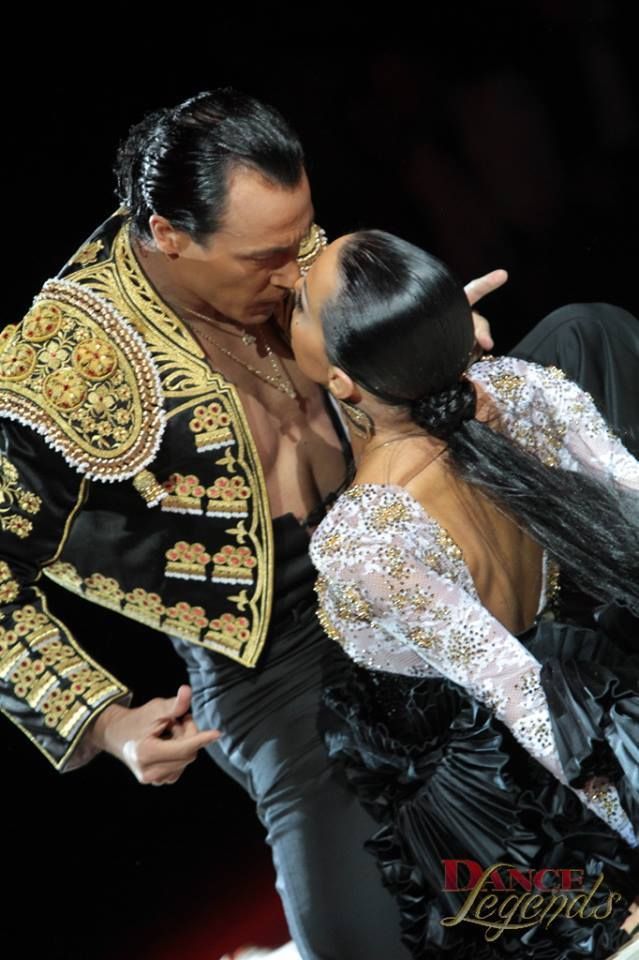 While beginning in the promenade position, both dancers would be moving forward. The leader would then turn their back to face the follower.
While beginning in the promenade position, both dancers would be moving forward. The leader would then turn their back to face the follower.
The Appeal of the Appel
A big part of dancing and most fun is the dramatic and theatrical elements added to the routine. Known as The Appel, this is the stamping of the foot on the dance floor. This step mimics a bullfight when the Matador is calling to the bull. But in dance, it is when the leader signals to the follower that they are about to begin moving.
It’s Your Move Now
Now that you have the basic idea of how to dance the Paso Doble, start dancing. Turn on the radio, and find a song that suits you. You will be shocked by how many songs go well with the Paso Doble.
Want To Know More?
Though the Paso Doble is a simple and easy dance to learn. We feel that most dancers learn better with dance lessons from an instructor. Contact us today to schedule a private dance lesson or group class.
Schedule Your Lesson Today
No Partner Necessary
Learn the Paso Doble Dance Today
The origins of the Paso Doble (translated to “double step”) are disputed but every origin story has roots in Spanish bullfighting. Since the 1930s, the dance has portrayed the gentleman as the bullfighter and the lady as his cape. During the performance, the actions of the bull are suggested along with some aggressive action in certain movements.
Since the 1930s, the dance has portrayed the gentleman as the bullfighter and the lady as his cape. During the performance, the actions of the bull are suggested along with some aggressive action in certain movements.
The main characteristics of Paso Doble dance are sharp movements and quick moves around the floor. To acquire the proper feeling, it’s helpful to visualize the pageantry of the matadors, as they make their grand entry into the bull ring and feel the attitude that they portray during the fight.
True to its name, Paso Doble moves quickly and you’ll take about 120 steps per minute when doing it!
Want more information on our Paso Doble Lessons? Call Now!
(919) 872-0111
Paso Doble Steps & Posture
Both the leaders and followers keep their hips forward in this dance. Some people even tilt their upper body back to balance out the forward position of the hips. The spine is straight and stretched up at all times to create a very dramatic look.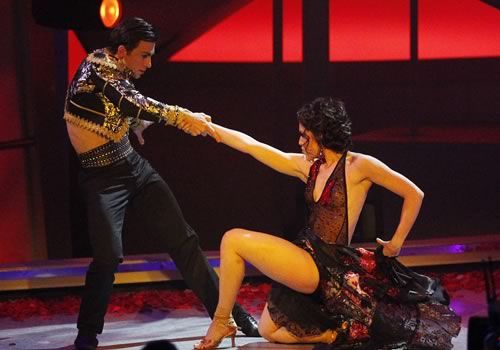
The leader, typically the man, will do a lot of posturing and high gestures, while the follower, usually the woman, performs circular steps around him. While most of the steps are led with the heel, there is a lot of moving on the balls of the feet to keep the high postures. The dancers keep a rigid and close hold on each other throughout the dance.
The most basic Paso Doble step involves standing on one foot (right if you are the leader, left if you are the follower). From there, each person takes tiny steps in place on the ball of the foot, counting 1-2-1-2.
Despite being a Spanish dance, Paso Doble step names are actually French. The chasse cape is one of the most popular steps and involves the man turning the woman in a way that mimics the matador’s cape. Other common steps include the basic movement forward (small steps forward) and basic movement back (small steps back).
Paso Doble Music
Paso Doble music is generally danced in 2/4 time to music that is between 116 and 124 BPM (beats per minute).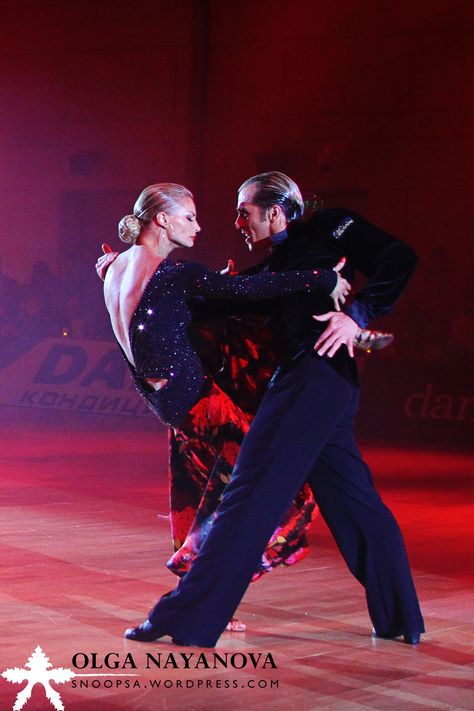 Here are some popular songs that are perfect for Paso Doble:
Here are some popular songs that are perfect for Paso Doble:
- En El Mundo by La Banda
- Don’t Stop the Music by Rihanna
- Bad Romance by Lady Gaga
- Stronger by Kelly Clarkson
- U Got the Look by Prince
Benefits of Paso Doble Dance Lessons:
- It’s a great cardio workout, in addition to strengthening and toning the legs, core, and glutes
- Paso Doble classes are also a great workout for your brain!
- You’ll meet new people, and make new friends
- You’ll get a confidence boost
- Paso Doble lessons make for a great date night
Try Something New With Paso Doble Lessons!
Whether you’re brand new to dancing or you’re just new to Paso Doble, you’ll love learning at Fred Astaire Dance Studio of Raleigh. Give us a call at (919) 872-0111 or fill out the contact form below to schedule your first lesson! (New to Fred Astaire Dance Studio in Raleigh? Take advantage of our new student special!)
Contact us to schedule your lesson
No Partner Necessary
Paso Doble dance technique for beginners.
 Reminiscent of a bullfight with the participation of a bullfighter Paso Doble dance technique for beginners. Reminds me of a bullfight with the participation of a bullfighter
Reminiscent of a bullfight with the participation of a bullfighter Paso Doble dance technique for beginners. Reminds me of a bullfight with the participation of a bullfighter | HOUSE | MENU | DOKI | SEARCH |
Culture › Dance › Latin American ›
see Recommended literature on dance. Designations and abbreviations
Narrative, emotionally explosive, heroic dance of Spanish origin, widespread in Latin America, included in Latin American program sports ballroom dancing . Reminiscent of a bullfight with the participation of a bullfighter, a bull and even a raincoat, it is distinguished by a special setting of the body, arms, head. It is performed with a significant advance along the line of dance, in the nature of the Spanish march. Muses. size 2/4, moderately fast pace: 60-62 t/min. (120-128 beats / min).
The name "paso doble" in Spanish means "double step", and possibly comes from "Paso a Dos", i.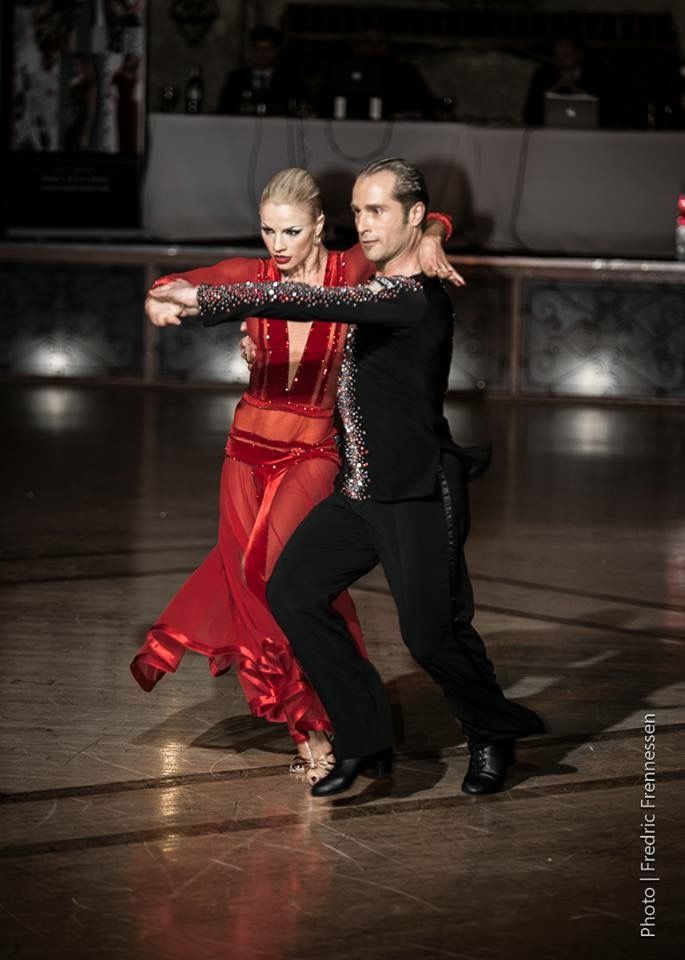 e. "dance for two".
e. "dance for two".
The original paso doble was one of many Spanish folk dances and is directly related to exotic bullfighting. In essence, this is the dance of a handsome torero deftly manipulating a red cloak in front of a bull. The music of the dance is based on the marching intonations characteristic of the beginning of the magnificent ceremony that opens the bullfight. (Bullfight originated in Crete and only at the beginning of the 18th century came to Spain.)
In the 1930s the paso doble becomes popular in Paris, and French names for many of the figures appear. Later, the dance enters ballroom dancing competitions. The competitive version of the paso doble is performed with a high chest and wide shoulders. Most of the forward steps start with the heel, many short and sharp movements of the body. No half-heartedness and relaxation.
The most characteristic of the pas dance is stepping from foot to foot (sur plas), clear, staccato, defiant. For greater expressiveness of the dance, appel is used - a blow with the whole foot to the floor. Paso doble figures reflect the actions of the torero in the arena: "Attack", "Stab with a lance", "Cloak", etc.
For greater expressiveness of the dance, appel is used - a blow with the whole foot to the floor. Paso doble figures reflect the actions of the torero in the arena: "Attack", "Stab with a lance", "Cloak", etc.
PASODOBL dance technique for beginners
This dance is a stylization of the main figures performed by the bullfighters in the arena. Each of them has its own name: stepping from foot to foot (“on the spot”), veronica, evasion (ekar), cloak, ronda, cross turn, etc. In the first part of the article, we will present only the simplest figures: stepping, evasion and zigzag. The nature of the paso doble requires the detailing of short and sharp, but well-defined body movements. He is not characterized by half-heartedness and relaxation. Size: 2/4, 3/4, 6/8 is also found, but the most convenient score for playing is 2/4.
Tempo: 60 measures or 120 beats per minute.
Basic Rhythm: Each movement is played for one beat, except for variations where each step requires half or a quarter of a beat.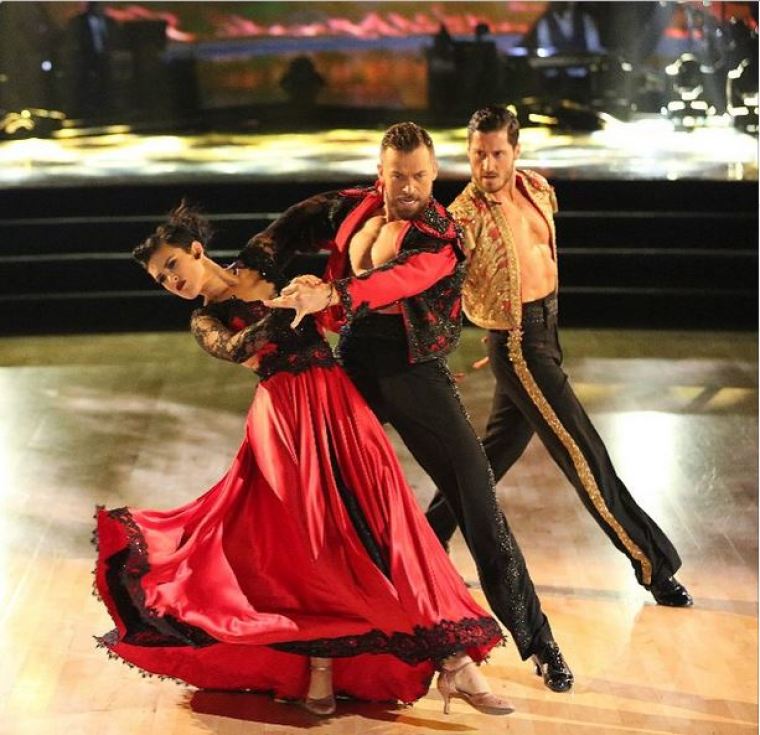 Position: partners are at a small distance from each other, the body should be kept straight. The right arm of the partner is bent at a sharper angle, the elbow is raised. The left hand of the partner conveys the proud manner of the torero. The couple dances "eye to eye", but somewhat moving away from each other. Do not go to extremes and emphasize the Spanish style of dance too much.
Position: partners are at a small distance from each other, the body should be kept straight. The right arm of the partner is bent at a sharper angle, the elbow is raised. The left hand of the partner conveys the proud manner of the torero. The couple dances "eye to eye", but somewhat moving away from each other. Do not go to extremes and emphasize the Spanish style of dance too much.
1. Stepping over (“on the spot”)
The movement consists in the fact that the partners take steps on the spot, clearly stepping from foot to foot, slightly lifting their heels off the floor:
1. Transfer body weight to right foot.
2. Transfer body weight to left foot, etc.
Feet slightly apart. Such movements are repeated from 4 to 8 times - in place or with a turn to the right, to the left. The partner performs the opposite steps.
Fig. Stepping from foot to foot ("on the spot"). Pa partner and partner
2. Escape (ecar)
Escape (ecar)
Begin and end the movement facing along the line of dance or facing diagonally to the center. This is a wide step in chass, used as a contrast to the normally executed small steps. Each step is one hit or count.
For Partner:
1. Step forward with the right foot (count "times").
2. Step forward with the left foot (two count).
3. A very wide step with the right foot to the side to the right, the knees are relaxed (count "one").
4. Put the left foot to the right, rise on half-toes, straighten the knees (two count).
For Partner:
Performs opposite steps.
Note: The movement can be performed with a quarter turn or even a half turn to the left, depending on the connection. On 3, 4, the partner turns his head sharply to the left, and the lady turns to the right.
Fig. Evasion (ekar). Pa partner and partner
3.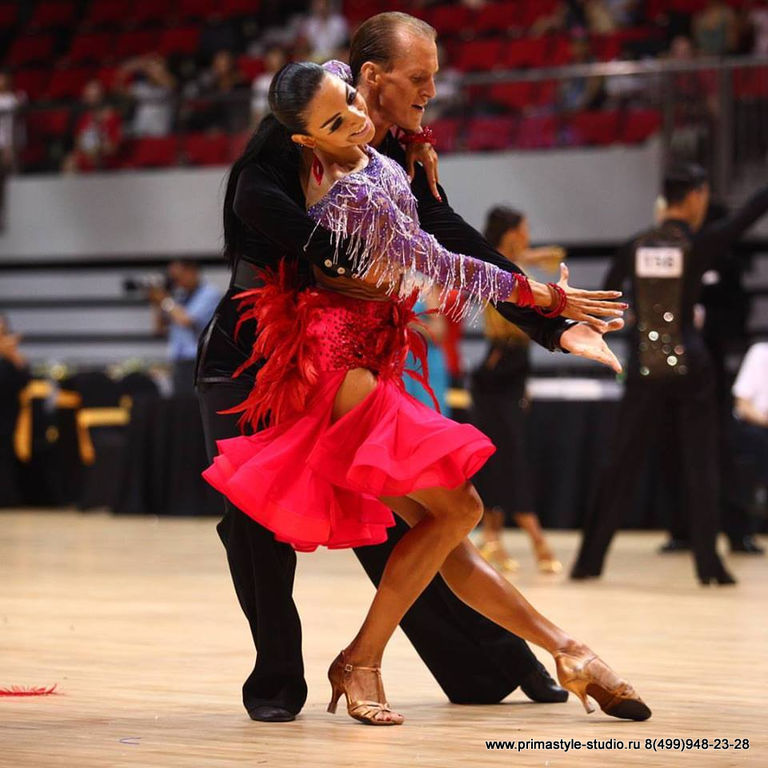 Zigzag
Zigzag
This movement is very pleasant in dancing, as it allows the transition from short movements (for example, stepping over) to wider ones. At first, the zigzag should not be performed too wide. Beginners quickly master this movement.
For Partner:
Starts moving diagonally towards the wall and ends against the line of dance, transitioning to dodge to the right.
1. Step left foot to the left along the line of dance (count "one").
2. Step with the right foot forward, the lady to the side to the right of the partner (two count).
3. Step with the left foot to the left along the line of dance, with the back diagonally to the center (count "one").
4. Step with the right foot back diagonally to the center, the partner is on the side to the left of the partner (two count). Repeat from point 1.
For Partner:
Begins with back diagonal to wall and ends with face in line of dance, transitioning to dodge to the left.
1. Step with the right foot to the right along the line of dance in a position with the back diagonally to the wall (count "one").
2. Step with the left foot back diagonally to the partner's side wall (two count).
3. Step with the right foot to the right along the line of dance in a position facing diagonally to the center (count "one").
4. Step left foot forward facing diagonally to the partner's side center (two count).
Repeat from point 1 as desired.
Note: At the end of the movement, the partner is in a position against the line of dance facing the partner. The partner connects the feet and dodges to the left.
Fig. Paso Doble Zigzag
PASODOBL dance technique for advanced
1. Appel (call)
In the first part of this article, you got acquainted with the movement "stepping over" ("on the spot"). It represents the pas most characteristic of paso doble, emphasizing the rhythm of the Spanish march in this beautiful dance. This movement can be the starting point for all the variations that the experienced dancers depict the various passages of the torero in the arena. To give the paso doble even more character, the dancer must learn to use the "challenge," which is really the preparation for the advancement pas. He indicates to his partner that now there will be a transition from a static movement to a dynamic one.
This movement can be the starting point for all the variations that the experienced dancers depict the various passages of the torero in the arena. To give the paso doble even more character, the dancer must learn to use the "challenge," which is really the preparation for the advancement pas. He indicates to his partner that now there will be a transition from a static movement to a dynamic one.
Start in closed position, feet together, body weight on left foot. The partner usually starts with the right foot. It consists in a short blow of the feet of the right leg on the floor. During dance competitions, "challenge" is used more for effect than for linking. However, it can serve as the first step in numerous complex variations that we will not describe here: attack, sixteen, syncopated separation, pass, twists, muleta strike, etc. We will use the “call” in most of the variations discussed below: “on the spot ”, with a rise to the half-toes, a promenade, a counter-promenade.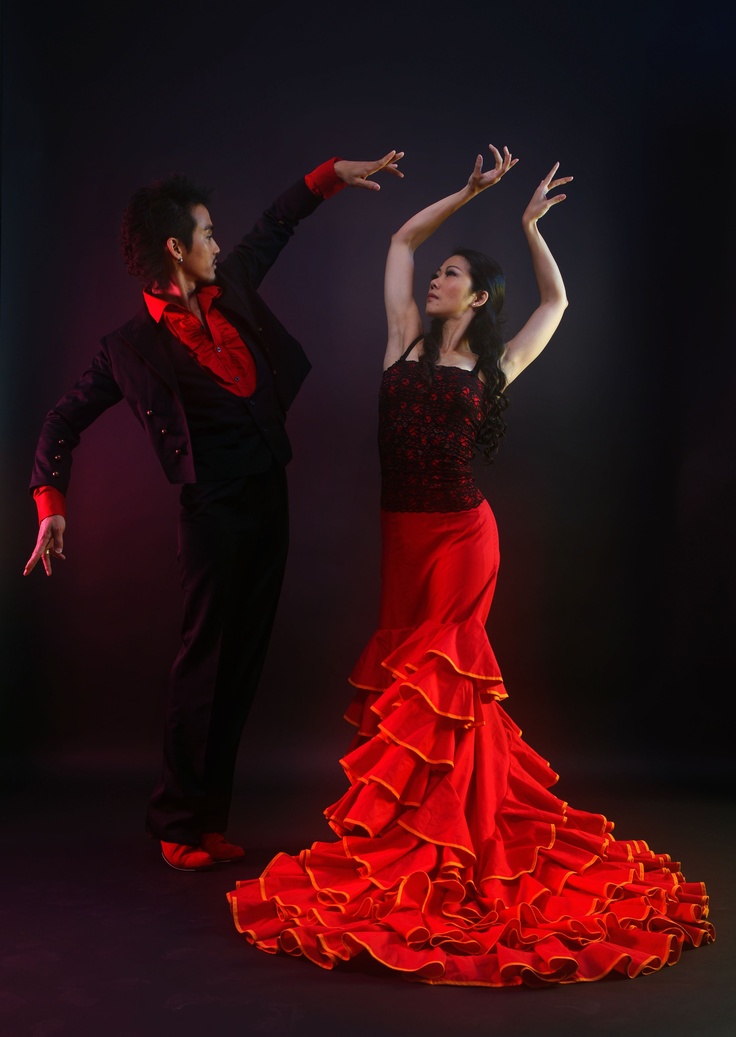
2. Driving in place
This is one of the basic movements of paso doble, which is used as a link to move from one figure to another. Begin and end it in a closed position, feet together, body weight on the left leg. The movement consists of a series of transfers of body weight from one leg to another without advancing (knees and feet together). At the same time, you can perform rotational movements to the left or right, while remaining in place. In this case, the partners must ensure that the two of them remain in a closed position.
To do this, the lady must perform steps slightly larger than the man, as she describes a circle to the right or left, while the man turns around on the spot, leading the lady in one direction or the other. Movement "on the spot" most often begins with the right foot, but can also begin with the left. The steps of the partner are opposite to the steps of the partner. Count: "one", "two" - "one", "two" - "one", "two", etc.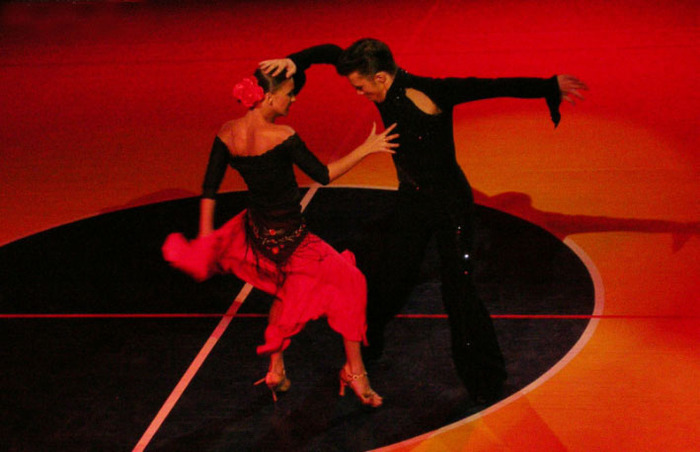
Note: If the movement "on the spot" is performed with a rise on the toes, it is appropriate to make a "call" in the first step.
3. Chassis and toe lift
Chasse right
Start in closed position, facing center, feet together, body weight on left foot; end up in a closed position. Chasse is a small step to the right, which is repeated at will. On "one" - a small step with the right foot to the side; on "two" - put the left foot to the right. The number of steps can be anything.
Chasse left
It is performed in the same way as Chassé to the right, but facing the wall. On “one” - transfer the weight of the body to the right leg (in place). On "two" - a small step with the left foot to the side. On "one" - put the right foot to the left. On "two", "three" - the steps can be repeated.
Note: Chasse is used to change direction. They are performed most often on a quarter turn, sometimes ending in a promenade position.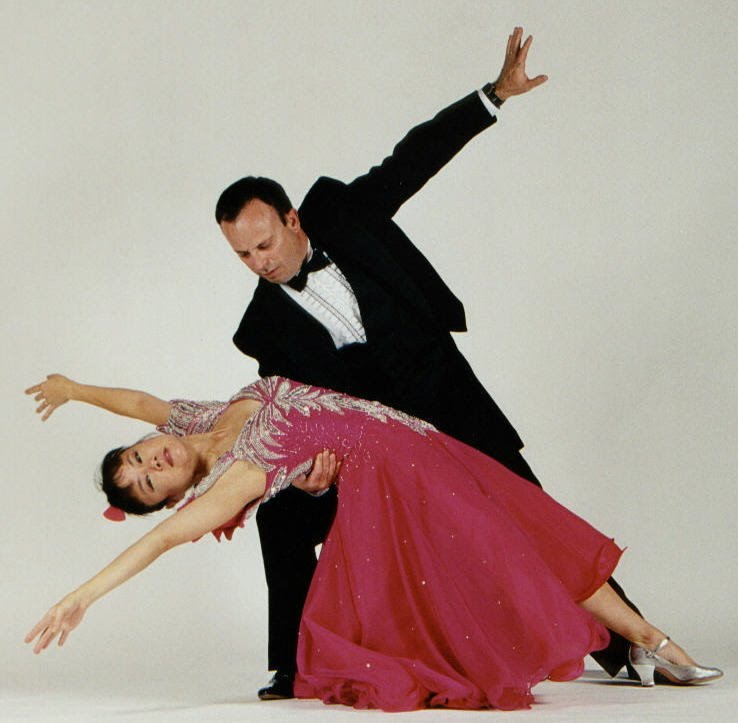 Lateral steps in the chassis are small. The prefix must be accurate and accurate.
Lateral steps in the chassis are small. The prefix must be accurate and accurate.
Rise on half toes to the right.
Start in closed position, facing center, feet together, body weight on left foot; end up in a closed position. There are three ways to perform a half-toe raise.
1. Chasse to the right, performing the first and third steps very high on the toes, legs straightened; second and fourth steps - with relaxed knees, heels on the floor. Count: "one", "two", "three", "four". Repeat as desired.
2. Chasse to the right, performing the first and second steps very high on the toes, legs straight; third and fourth steps - with relaxed knees, heels on the floor. The account is the same.
3. A few chasses to the right, very high on half toes, legs straight; then again a few chasses with relaxed knees, heels on the floor. The account is the same. Repeat as desired.
Rise on half toes to the left
Start in a closed position facing the wall, feet together, body weight on the left leg; end up in a closed position. There are three ways to perform a half-toe raise to the left, similar to those described above.
There are three ways to perform a half-toe raise to the left, similar to those described above.
4. Eight
Start in promenade position diagonally to the wall, body weight on left foot; finish in a closed position facing the wall.
For Partner:
1. Step with the right foot forward in promenade position (count "one").
2. Turn slightly to the right, put the left foot to the right and move the partner to his left side (two count).
3. Step in place of the right leg, the partner is still on the left (count "one").
4. 5. 6. Transfer the partner to your right side, performing the movement "on the spot" with your left, right, left foot (count "two", "one", "two").
7. Move the partner forward, performing the movement "on the spot" with the right foot (count "times").
8. Turn the partner to face you, step in place with your left foot; take a closed position again (count "two").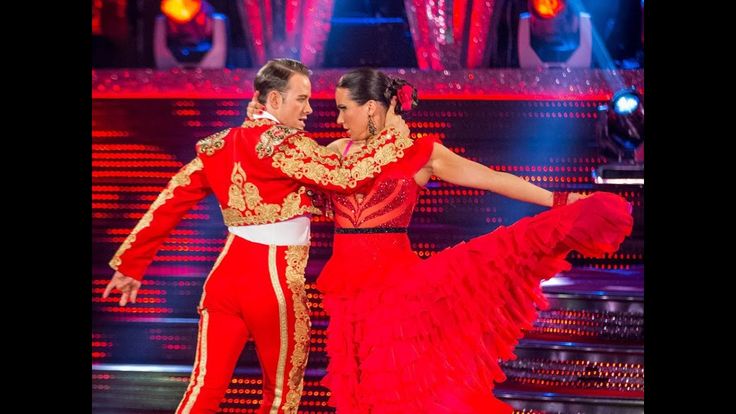
Leading the partner into turns, you should keep the body straight and stable. Experienced dancers make hand movements similar to those of a bullfighter with a cape, performing it in a somewhat open position.
Fig. Eight. Beginning, end and movement of the partner around the partner
For Partner:
1. Step with the left foot forward in the position of the promenade (count "one").
2. Starting to turn the body to the left, take a step with the right foot to the side to the right (two count).
3. Continuing to turn the body to the left, transfer the weight of the body to the left leg (counting "times").
4. Step forward with the right foot, crossing the line of the body, into a counter-promenade position (two count).
5. Starting to turn the body to the right, take a step with the left foot to the side to the left (counting “times”).
6. Continuing to turn the body to the right, transfer the weight of the body to the right leg (two count).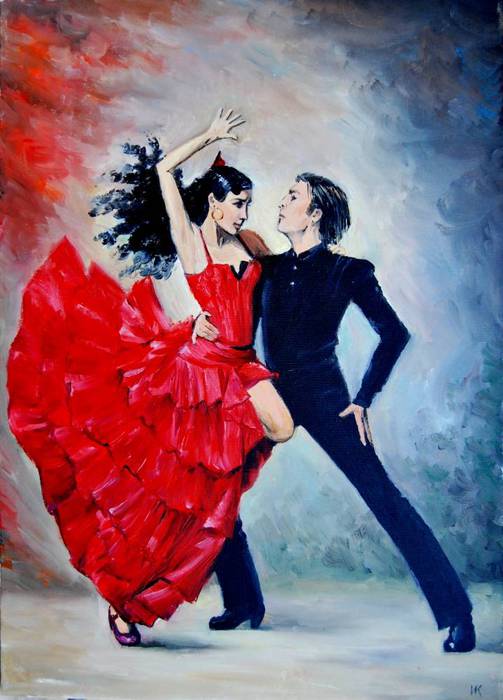
7. Step forward with the left foot towards the partner, cross the right foot into the promenade position (count “one”).
8. Turn to face your partner and put your right foot to the left (two count).
5. Promenade and counter promenade
Start in a closed position facing the wall, feet together, body weight on the left foot, ending along the line of dance in a counter-promenade position.
For Partner:
1. Appel with the right foot (count "times").
2. Step left foot to the side to the left in promenade position (two count).
3. Step right foot forward in a promenade position and continue turning to the right (counting "one").
4. Continuing to turn to the right, take a step with your left foot to the side to the left and slightly back with your back along the line of dance (two count).
5. Continuing to turn to the right, take a step with the right foot to the side to the right in the counter-promenade position (counting "one").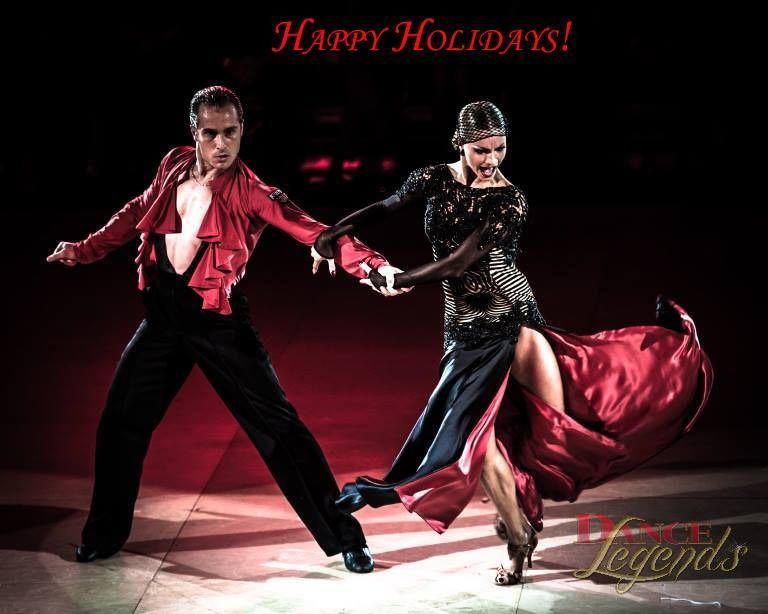
6. Step forward with the left foot in counter-promenade position (two count).
7. Turning to the right, take a step forward with the right foot opposite the partner's left foot, move her to the promenade position (counting "one").
8. Step left foot to the side to the left in promenade position (two count).
To facilitate the movement and create a beautiful line in the counter-promenade position, the partner must make a sliding movement with the right hand from the shoulder to the elbow of the lady. The hand returns to its original place when the partners become in the promenade position.
For Partner:
1. Appel with the left foot (count "times").
2. Step right foot to the side to the right in promenade position (two count).
3. Step forward with the left foot in the position of the promenade (count "one").
4. Turning to the right, take a step forward with the right foot opposite the left foot of the partner (two count).
Fig. Promenade and counter promenade. Pa partner and partner
5. Step with the left foot to the side to the left in the position of counter-promenade (count "one").
6. Step right foot forward in counter-promenade position, turning to the right (two count).
7. Continuing to turn to the right, take a step with your left foot to the side to the left and slightly back (counting "one").
8. Continuing to turn to the right, take a step with the right foot to the side to the right in the promenade position (two count).
Note: The promenade movement may be preceded by the following variations: movement "in place", "in place" with rise to half toes, and they may be followed by an eight or more complex figure.
6. Ekar (evasion) and veronica (cloak movement)
This is a very beautiful variation, in which the partner, moving around the partner, depicts the cape of the torero, which he deftly manages.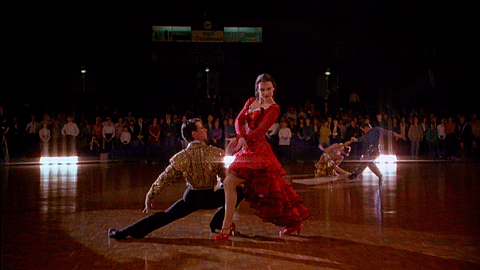
For Partner:
Starts in a closed position facing the wall, feet together, body weight on left foot; finishes in closed position facing center.
1. Appel with the right foot or step forward (count "one").
2. Step forward with the left foot, pushing the partner away, but continuing to hold her hands (two count).
3. Step with the right foot to the side to the right (count "times").
4. Cross of the left leg behind the right in the position of the temple, the left arm is down (count "two").
5. Transfer body weight forward to the right leg (count "times").
6. 7. 8. Leaving the feet in place, guide the partner forward towards the wall. The partner continues to move around the partner in a circle from his right side to the left; when she moves, the partner’s left arm is extended in the direction of the partner (count “two”, “one”, “two”).
9. 10. 11. 12. Continuing to lead the partner in a circle forward, perform a 3/4 turn to the left; the last step (p.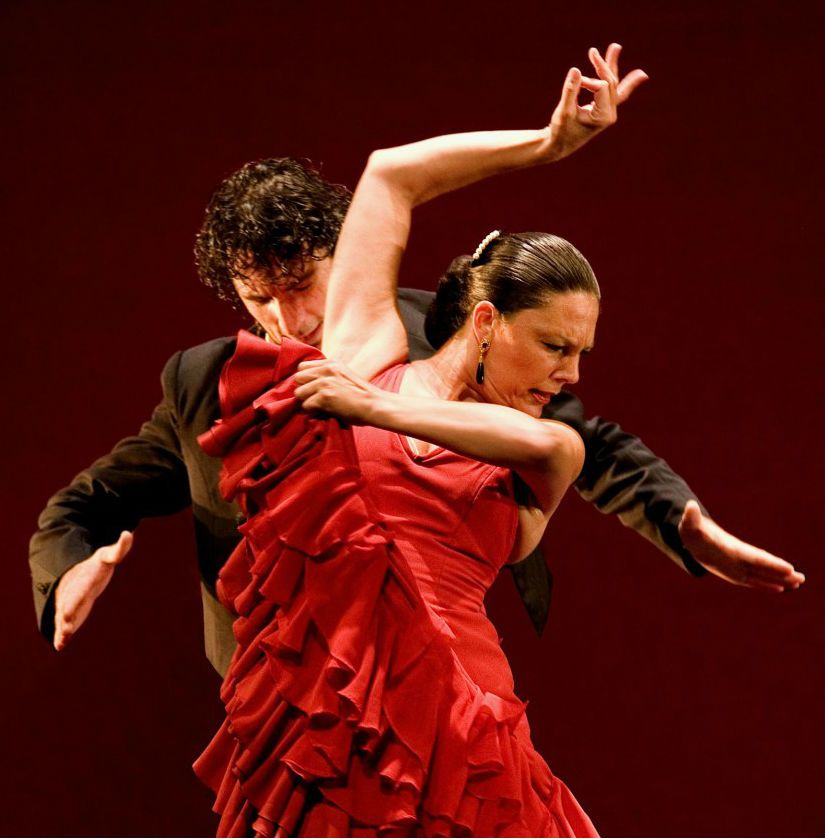 12) is performed with the left foot with the transfer of body weight to it, the partner is on the partner’s left side, hip to hip (counting “one”, “two”, “one”, “two”).
12) is performed with the left foot with the transfer of body weight to it, the partner is on the partner’s left side, hip to hip (counting “one”, “two”, “one”, “two”).
13. 14. 15. 16. 17. Continuing to lead the partner forward in a circle in the direction of the wall, perform a forward march, moving along a curve to the left on the other side of the circle - right, left, right, left, right foot (count "one", "two", "one", "two", "one").
18. Continuing the turn to the left, cross the left leg behind the right and bend the knees, forcing the partner to turn a quarter turn (two count).
19. Continuing to turn to the left, take a step with the right foot directly in front of the partner (counting "one").
20. Put the left foot to the right and stand in the usual closed position (two count).
Note: This variation may be preceded by: main move - move in place or chassé to the left, and may be followed by: main move - move "in place" - chassé to the right.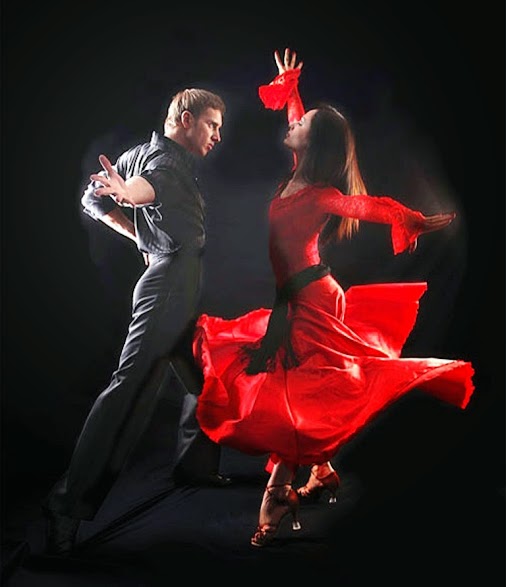 The position of the partner's left hand with the partner's right hand is high, the elbows are pushed forward.
The position of the partner's left hand with the partner's right hand is high, the elbows are pushed forward.
Connections and variations
Consisting of 8 or 16 cycles:
Movement "on the spot" - zigzag - ekar. Take a new direction.
Eight - chasse left or two chasse - promenade position and new eight or veronica.
Movement "on the spot" - promenade and counter-promenade - figure eight or veronica - zigzag. Appel - ecar and veronica.
March - movement "on the spot" - appel - ecar and veronica - march - movement "on the spot" - chasse to the right - appel.
<< Back: Latin American Ballroom Dance Program
Maria Vasilevskaya "Dancing from A to Z" A book about dances for a wide range of readers
| We recommend that you look at the popular sections of the site myvaleology. | ||||||
| Version all4-8 | ||||||
Copyright © VZOJ 2022. All rights reserved. When reprinting or citing materials from myvaleology.com, please link to myvaleology.com :
Healthy Living
The rights to the photographs belong to their authors.
The site is powered by www.reg.ru hosting, discount for services using promo code 5084-7F0E-EABE-D693
In partnership with www.onlinetrade.ru (You immediately receive 300 Bonuses for purchases upon registration, 1 Bonus = 1 Ruble)
Paso Doble dance. How to dance? Meaning and symbolism. How to do the steps
The Paso Doble is a Spanish dance with a 2/4 meter time signature. Paso doble means "double step" in Spanish. Thematically, the dance resembles a fight between a bullfighter and a bull, that is, a bullfight.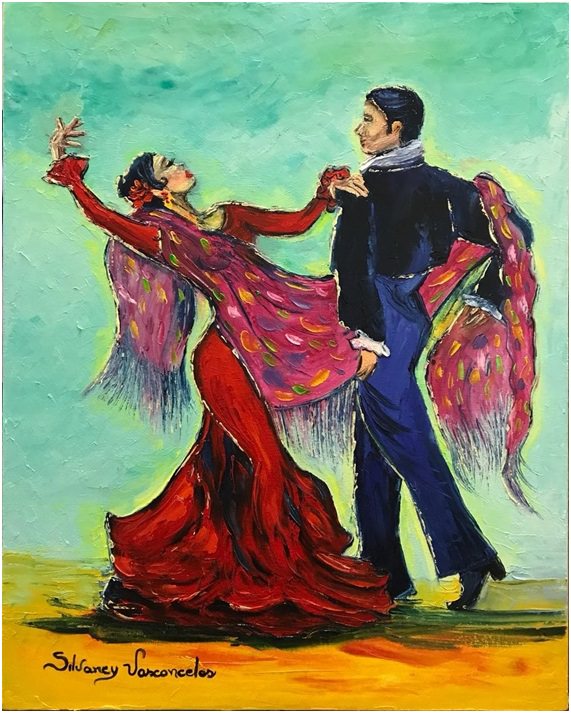 The partner acts as a bullfighter, and the partner plays the role of a bull. This ballroom dance consists of three parts: the entrance to the arena, the image of the fight with the bull, and the defeat after the end of the fight. The Paso Doble is a Latin American dance. Paso doble lessons have a wonderful effect on mood, figure and improve grace.
The partner acts as a bullfighter, and the partner plays the role of a bull. This ballroom dance consists of three parts: the entrance to the arena, the image of the fight with the bull, and the defeat after the end of the fight. The Paso Doble is a Latin American dance. Paso doble lessons have a wonderful effect on mood, figure and improve grace.
What is worth knowing about paso doble?
The Paso Doble has an interesting and extremely original origin. It is based on the music used in bullfighting. The leader of the paso doble assumes the role of the matador, while his partner plays the role of the bull or shadow of the matador or even the flamenco dancer.
The paso doble is extremely spectacular, provided that the dancers are fluent in choreography and technique. The charisma of the performers and the ability to confidently express themselves and their emotions are also important. Acting skills may also be helpful.
Moreover, this is the only dance that cannot be shortened, and in the choreography of which not a single gap can appear - there is no room for improvisation or mistakes.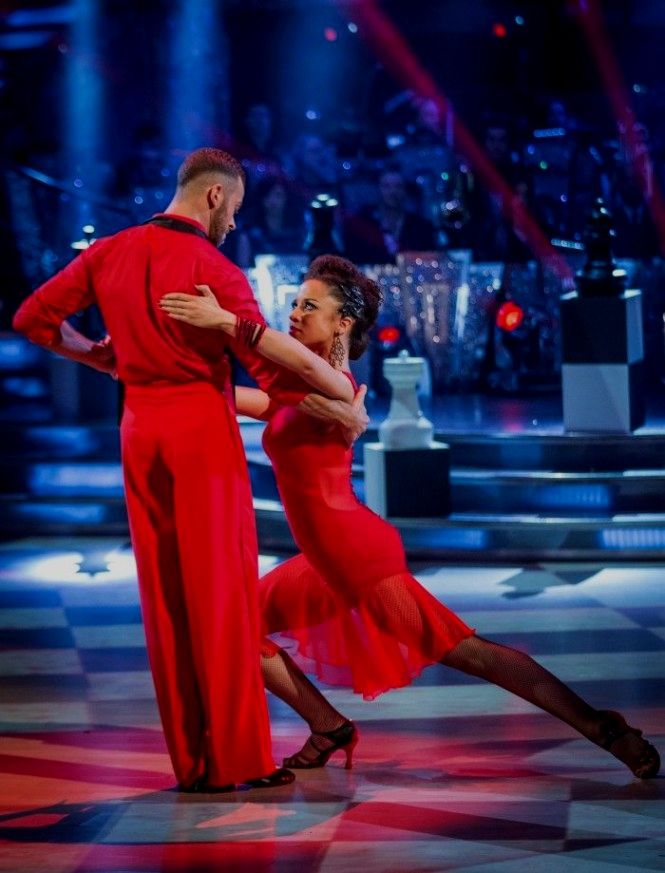 Each part of the dance has a strictly defined number of measures, so it is enough to skip one step to fall out of the rhythm. Therefore, a well-danced paso doble requires great efforts and skills from the dancers. As a ballroom dance, the paso doble is performed almost exclusively during dance tournaments.
Each part of the dance has a strictly defined number of measures, so it is enough to skip one step to fall out of the rhythm. Therefore, a well-danced paso doble requires great efforts and skills from the dancers. As a ballroom dance, the paso doble is performed almost exclusively during dance tournaments.
This is because choreography and first learning the sequence of steps are essential to a successful dance floor. However, this is not the case in Spain, France, Vietnam, Colombia, Costa Rica and some parts of Germany where the paso doble is danced even without choreography.
In tournaments, the paso doble is performed as the penultimate Latin American dance. Dance costumes may resemble bullfighting. Most often, the partner is dressed in a red, semi-short dress that opens her legs, and black fishnet stockings.
Paso Doble Music
Paso Doble is a dynamic dance performed to march-like music so that the tension continues to build as you dance, culminating in the last beat, which usually draws the audience's enthusiasm.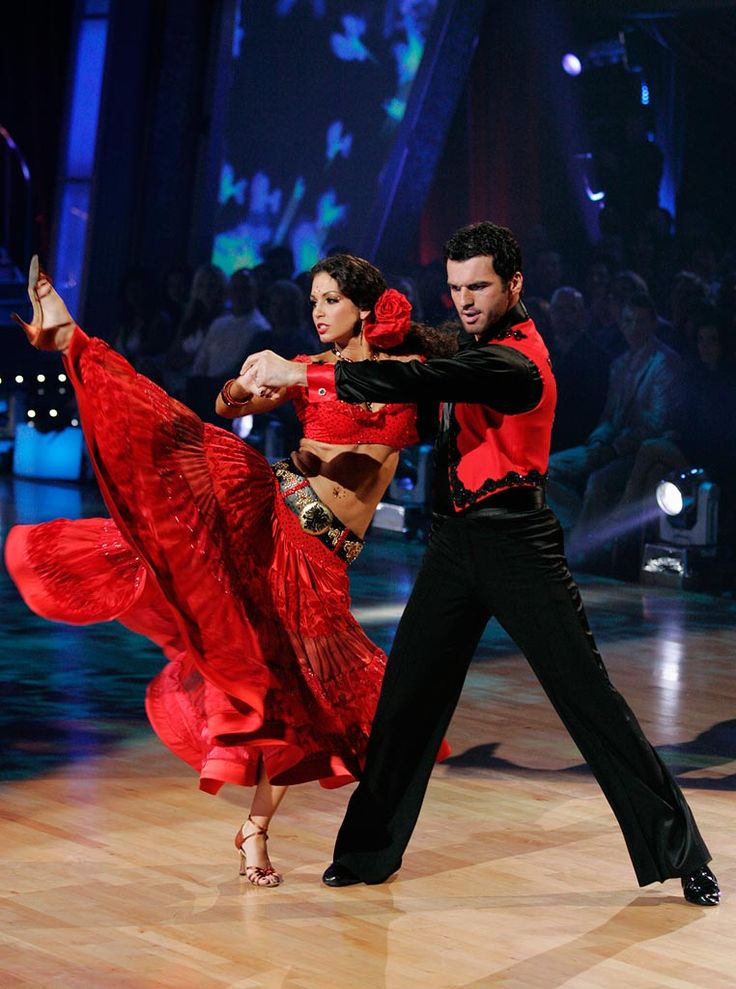 The standard tempo of this dance is 60 beats per minute.
The standard tempo of this dance is 60 beats per minute.
Steps to Paso Doble
Paso Doble is, like Rumba, a Latin American dance. However, this is similar to the so-called standard dances, where the forward step is performed in such a way that the weight of the body first falls on the heel and then on the rest of the foot.
In addition, the frame is wider and more rigidly supported and there is no such pronounced movement of the hips. A characteristic feature of the paso doble is the end of each part of the music with a clearly emphasized beat, during which the dancers must take a spectacular pose.
This is a kind of summary of this stage of the fight between the matador dancer and the bull dancer. During the dance, the partners line up facing each other, straight, touching the hips.
Dancers raise their heads high and open their chests. The partner hugs his partner with his right hand, the hand is placed near the left shoulder blade. The joined hands of the dancers are raised to the height of the partner's head.
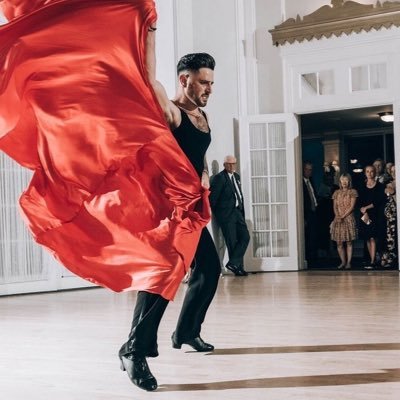 com:0006
com:0006 